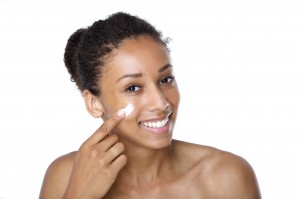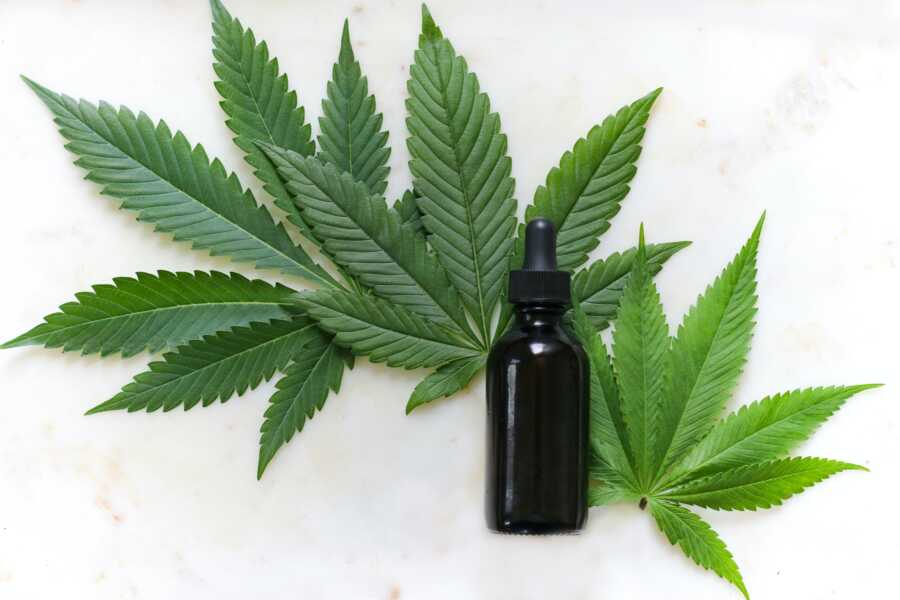The beauty and skincare market is currently a multibillion-dollar industry, with a staggering number of products claiming to prevent, slow, and even reverse the effects of aging. Every year in an effort to appear younger, men and women spend significant amounts of money on beauty products aimed at reversing the signs of aging. In this hunt for the fountain of youth we have one question: is there a product that actually works?

In 2012, a popular television show, The Dr. Oz Show, heavily advertised the anti-aging benefits of vitamin C serums. They claim that the active ingredient, L-ascorbic acid, works in two ways to reduce visible age by up to ten years. Firstly, it decreases the appearance of wrinkles by increasing collagen production, and secondly, it reduces the number of age spots as a powerful antioxidant.1
What Is a Vitamin C Serum?
Vitamin C is an essential nutrient that is not produced by our bodies. We take in vitamin C from foods such as citrus fruit and dark-green leafy vegetables, or from dietary supplements. Topical vitamin C is available in a wide range of products, from serum to creams. Products can range in price from $50 to $100 and can contain between 5% to 10% of pure vitamin C (as L-ascorbic acid) along with various additional ingredients such as zinc and vitamins D and E. Most products are applied to the face every morning, in addition to normal skin care routines, to reduce the appearance of wrinkles and prevent sun damage.
What’s the Logic Behind It?
It is thought that vitamin C serum helps reduce the appearance of aging in two ways: as an antioxidant and by increasing collagen production.
Vitamin C as Antioxidant: Vitamin C has antioxidant properties, meaning it neutralizes free radicals2. Some of these free radicals are produced by UV light from the sun and have the potential to damage skin cells. UV light can also suppress existing antioxidant levels3. It is therefore thought that vitamin C should help protect the skin from damage caused by sun exposure.
Vitamin C as a Collagen Producer: Collagen is a protein fibre that provides strength to the skin. Through natural aging and sun exposure, the tissues of the skin become thinner, weaker, and lose elasticity; this leads to wrinkles4. It has been found that vitamin C increases the expression and production of collagen and procollagen when added to cultured human skin cells for a prolonged period of time2,5. In essence, vitamin C may aid in repairing tissue that has been damaged from aging or sun exposure.
Although several studies support the logic behind vitamin C and its effects in the skin aging process, further questions must then be asked: Is there a noticeable improvement, and if so, is this difference significant enough to make it worthwhile for people to invest in these products?
What Do Studies Show Us?
While cell cultures show promise for vitamin C serum in reducing the signs of skin aging5, very few human studies have been done to confirm these findings. The ones that have been conducted show that this popular product has potential – at least at first glance. In one study, when 5% vitamin C serum was used daily for 6 months, the skin’s suppleness, roughness and the appearance of wrinkles improved greatly6. In other studies that analyzed higher concentrations of vitamin C, not only were similar results observed7, but additional advantages were also found: collagen production increased8, skin tone improved, and the overall appearance of skin was better7. The ‘before’ and ‘after’ pictures from the studies show amazing contrast. Plus, very few side effects were experienced with this product8 – but more on that later.
What Do We Think About These Results?
While these studies found a definite improvement in the skin condition, the conclusions of the researchers should be viewed with a certain amount of scepticism. First, there were too few participants in the studies, with the largest number being twenty. When studies include more people, results are more likely to be valid. There were also other flaws in the way that the studies were carried out, such that the placebo effect could have influenced results.
Another point of interest is that vitamin C serums that are sold to the public are only in concentrations ranging from 5% to 10%. The concentrations in the studies are much higher and range from 5% to 23.8%. At this time, we do not know what concentrations are the most effective and whether or not a higher concentration is necessarily better. One study did find that a 10% vitamin C serum did not improve the appearance of skin spots but 23.8% vitamin C did2.
Ultimately, we cannot say whether or not vitamin C serums are effective against skin aging. There is some evidence suggesting they are, but the quality of that information is questionable. Unfortunately, this prevents us from making a recommendation as the data is simply too unreliable at this point.
Are There Any Safety Concerns?
Vitamin C serums seem to have few side effects. At the site of application, there have been some cases of stinging, flaking, and redness2. Our major concern lies in the fact that the ingredients and strengths of vitamin C serums varied within all the studies. This variation is also seen in most of the products on the market. Differing concentrations and ingredients may change the risk of side effects and adverse reactions. While the variety between brands of serum must be taken into consideration when assessing the safety of the product, vitamin C serums seem well tolerated by most consumers.
The Bottom Line: Have We Found the New Fountain of Youth?
Not yet. While there is logic behind the use of vitamin C serum as an anti-aging product, its effectiveness is less clear. Current evidence suggests some people may benefit and have few side effects from its use. However, these studies are very small and not of high quality. Considering this and the inconsistency between formulations of vitamin C serums, we cannot strongly recommend vitamin C serum as an effective anti-aging product.
Authors:
Britteny Boisvert, Brittany Elliott, Hyeon-Ji Kim, Sin-Young Park, Monika Pytlak, Alyssa Wilson, BSc. Pharm Candidate(s)
Faculty of Pharmacy and Pharmaceutical Sciences
University of Alberta
Edited and Reviewed by the Health Aisle Team
References
- The Dr. Oz Show (2012). Drop a Decade From Your Face. Retrieved from: http://www.doctoroz.com/videos/drop-decade-your-face. April 10 2014.
- Thomas JR, Dixon TK, Bhattacharyya TK. (2013). Effects of Topicals on the Aging Skin Process. Facial Plastic Surgery Clinics of North America, 21(1), 55-60.
- Colven R. M., Pinnell S. R. (1996). Topical Vitamin C in Aging. Clinics In Dermatology, 14(2), 227-34.
- MedlinePlus. (2012). Aging changes in skin. Retrieved from http://www.nlm.nih.gov/medlineplus/ency/article/004014.htm. April 10, 2014.
- Kishimoto Y., Saito N., Kurita K., Shimokado K., Maruyama N., Ishigami A. (2013). Ascorbic acid enhances the expression of type 1 and type 4 collagen and SVCT2 in cultured human skin fibroblasts. Biochemical and Biophysical Research Communications, 430(2), 579-584.
- Humbert PG, Haftek M, Creidi P, Lapière C, Nusgens B, Richard A, Schmitt D, Rougier A, Zahouani H. (2003). Topical ascorbic acid on photoaged skin. Clinical, topographical and ultrastructural evaluation: double-blind study vs. placebo. Experimental Dermatology, 12: 237-244.
- Traikovich SS. (1999). Use of topical ascorbic acid and its effects on photodamaged skin topography. Arch Otolaryngol Head Neck Surg, 125:1091–8.
- Fitzpatrick RE, Rostan EF. (2002). Double-blind, half-face study comparing topical vitamin C and vehicle for rejuvenation of photodamage. Dermatol Surg; 28:231–6.
